The Art and Science of Mudras: Unlocking the Power Within
Are you looking for a comprehensive guide on how to use hand gestures for healing and transformation? In this article, you will learn about the art and science of mudras, the benefits and effects of different types of mudras, and how to get started with mudras for beginners. You will also find images and examples of seven mudras that you can use for various purposes, such as increasing knowledge, energy, elimination, gratitude, meditation, patience, and purity. Read on to discover how mudras can enhance your body and mind.
SPIRITUALITYWELLNESS
Caroline Ang
1/29/20247 min read
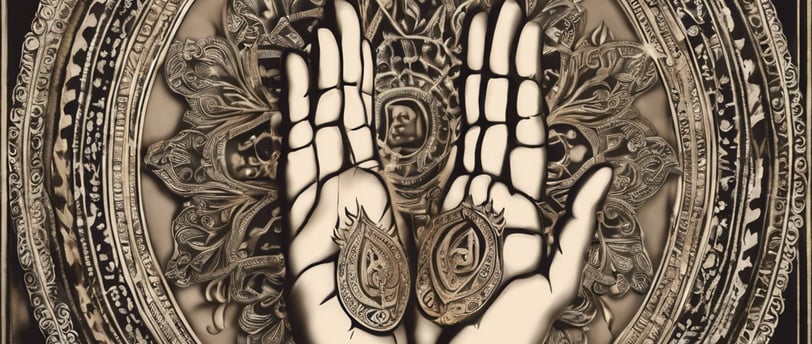

The Art and Science of Mudras:
How to Use Hand Gestures
for Healing and Transformation
Mudras are symbolic hand gestures that are used in yoga, meditation, and other spiritual practices. They are believed to influence the flow of energy in the body and mind, and to activate different aspects of consciousness. Mudras can also enhance the physical, mental, and emotional benefits of yoga and meditation, by creating a connection between the body and the mind.
Mudras have been used for thousands of years in various traditions, such as Hinduism, Buddhism, and Taoism. They are based on the principle that each finger represents one of the five elements: thumb for fire, index finger for air, middle finger for space, ring finger for earth, and little finger for water. By bringing the fingers together in different combinations, mudras can balance the elements and harmonize the body and mind.
There are hundreds of mudras, each with its own meaning and purpose. Some mudras are simple and easy to do, while others require more practice and concentration. Some mudras are done with both hands, while others are done with one hand. Some mudras are done with the palms facing up, while others are done with the palms facing down. Some mudras are done with the eyes open, while others are done with the eyes closed.
The Benefits of Mudras
Mudras offer a wide range of benefits for the mind, body, and spirit. By manipulating the flow of energy in the body, these gestures can help balance the chakras, stimulate the nervous system, and improve overall health. Here are some key advantages of practicing mudras:
Stress Relief: Mudras can help alleviate stress and anxiety by calming the mind and promoting relaxation.
Enhanced Focus: Certain mudras, such as the Gyan Mudra, can improve concentration and mental clarity.
Increased Energy: By activating specific energy points in the body, mudras can boost vitality and combat fatigue.
Emotional Balance: Mudras can help regulate emotions, promote positive feelings, and release negativity.
Physical Healing: Different mudras have been associated with healing specific ailments, such as headaches, digestive issues, and insomnia.
Spiritual Connection: Practicing mudras can deepen one's spiritual connection and enhance meditation experiences.
A Step-by-Step Guide for Beginners
If you're new to mudras, here's a simple step-by-step guide to get you started:
Choose a Mudra: Select a mudra that resonates with your intentions and needs. Consider the benefits you're seeking and the symbolism behind each mudra.
Find a Comfortable Position: Sit in a comfortable position with your spine straight and shoulders relaxed. You can sit cross-legged on the floor or use a chair if that's more comfortable for you.
Relax and Breathe: Take a few deep breaths to relax your body and mind. Allow any tension or stress to melt away.
Perform the Mudra: Gently bring your hands into the chosen mudra position. Hold the mudra with a light touch, ensuring that your fingers are relaxed and not strained.
Focus on the Intention: As you hold the mudra, focus your attention on the specific intention or benefit associated with the mudra. Visualize the energy flowing through your hands and into your body.
Practice Regularly: Consistency is key when it comes to mudra practice. Aim to practice for at least 10-15 minutes each day to experience the full benefits.
Remember, the effects of mudras may vary from person to person, and it's important to listen to your body and adjust your practice as needed. If you have any specific health concerns, it's advisable to consult with a qualified practitioner or healthcare professional.
For further reading on mudras and their benefits, you may find the following resources helpful:
Now that you've learned about the art and science of mudras, it's time to explore these powerful gestures and unlock the hidden potential within your own hands. Embrace the beauty and wisdom of mudras as you embark on a journey of self-discovery and transformation.



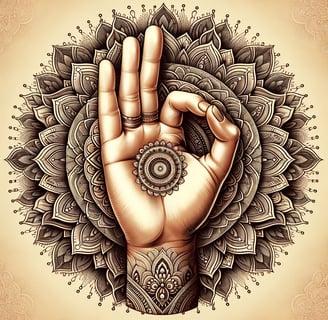
1. Gyan Mudra (Gesture of Knowledge)
Gyan Mudra is one of the most common and popular mudras. It is also known as Jnana Mudra or Chin Mudra. To do this mudra, touch the tip of your thumb and index finger together, and extend the other three fingers. You can do this mudra with both hands, and rest them on your knees or thighs, with the palms facing up or down.
Gyan Mudra is said to increase the flow of knowledge, wisdom, and intuition. It also stimulates the brain, improves concentration, and enhances memory. It can also help to calm the mind, reduce stress, and relieve anxiety and depression. Gyan Mudra can also balance the air element in the body, and regulate the nervous system and the respiratory system.
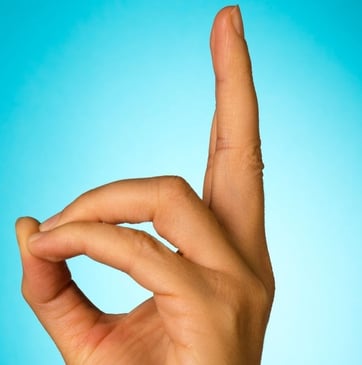

2. Prana Mudra (Gesture of Life Force)
Prana Mudra is another common and powerful mudra. It is also known as Kapha-Karak Mudra or Kapha-Vardhak Mudra. To do this mudra, touch the tips of your thumb, ring finger, and little finger together, and extend the other two fingers. You can do this mudra with both hands, and rest them on your knees or thighs, with the palms facing up or down.
Prana Mudra is said to increase the flow of life force, vitality, and energy in the body and mind. It also strengthens the immune system, boosts the metabolism, and enhances the digestion. It can also help to heal physical and mental ailments, such as fatigue, weakness, insomnia, and low blood pressure. Prana Mudra can also balance the earth and water elements in the body, and activate the root chakra and the sacral chakra.
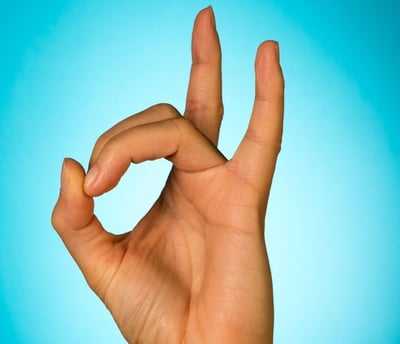

3. Apana Mudra (Gesture of Elimination)
Apana Mudra is another important and beneficial mudra. It is also known as Vata-Karak Mudra or Vata-Nashak Mudra. To do this mudra, touch the tips of your thumb, middle finger, and ring finger together, and extend the other two fingers. You can do this mudra with both hands, and rest them on your knees or thighs, with the palms facing up or down.
Apana Mudra is said to increase the flow of elimination, detoxification, and purification in the body and mind. It also supports the excretory system, the urinary system, and the reproductive system. It can also help to remove toxins, waste, and negative emotions from the body and mind, and to prevent and cure diseases, such as constipation, diabetes, and kidney problems. Apana Mudra can also balance the space and earth elements in the body, and activate the solar plexus chakra and the heart chakra
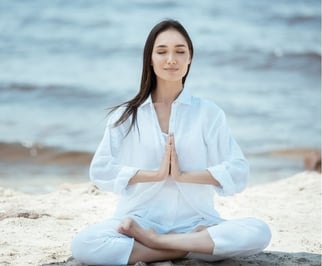

4. Anjali Mudra (Gesture of Reverence)
Anjali Mudra is another common and universal mudra. It is also known as Namaste Mudra or Prayer Mudra. To do this mudra, bring your palms together in front of your heart center, and touch your thumbs to your chest. You can do this mudra with your eyes open or closed, and with your head bowed or straight.
Anjali Mudra is said to increase the flow of reverence, gratitude, and love in the body and mind. It also symbolizes the union of the self and the divine, the left and the right, the masculine and the feminine, and the sun and the moon. It can also help to create a sense of harmony, peace, and balance in the body and mind, and to foster a connection with others and with the universe. Anjali Mudra can also activate the heart chakra, and align the chakras and the energy channels.
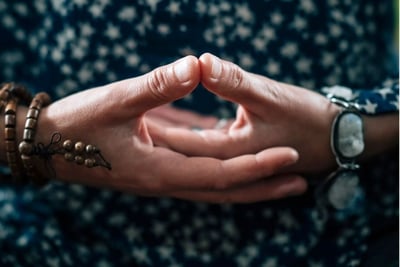

5. Dhyana Mudra (Gesture of Meditation)
Dhyana Mudra is another ancient and sacred mudra. It is also known as Samadhi Mudra or Yoga Mudra. To do this mudra, place your right hand on top of your left hand, with the palms facing up, and touch the tips of your thumbs together. You can do this mudra with your hands resting on your lap, and with your eyes closed or half-open.
Dhyana Mudra is said to increase the flow of meditation, concentration, and awareness in the body and mind. It also represents the state of enlightenment, bliss, and nirvana. It can also help to calm the mind, deepen the breath, and enhance the spiritual practice. Dhyana Mudra can also balance the fire and water elements in the body, and activate the third eye chakra and the crown chakra.
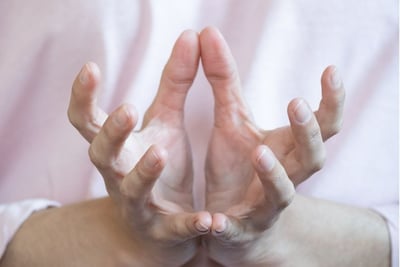

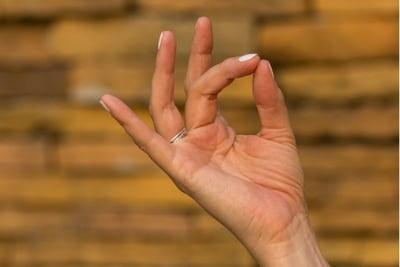

6. Shuni Mudra (Gesture of Patience)
Shuni Mudra is another simple and effective mudra. It is also known as Akash Mudra or Vayu-Vardhak Mudra. To do this mudra, touch the tip of your middle finger to the tip of your thumb, and extend the other three fingers. You can do this mudra with both hands, and rest them on your knees or thighs, with the palms facing up or down.
Shuni Mudra is said to increase the flow of patience, discipline, and commitment in the body and mind. It also stimulates the mind, improves the communication, and enhances the creativity. It can also help to overcome obstacles, challenges, and fears, and to achieve goals and dreams. Shuni Mudra can also balance the space element in the body, and regulate the blood circulation and the blood pressure.
7. Padma Mudra (Gesture of Lotus)
Padma Mudra is another beautiful and inspiring mudra. It is also known as Lotus Mudra or Flying Lotus Mudra. To do this mudra, bring your hands softly into Anjali Mudra in front of the heart center. Then spread your index, middle, and ring fingers like a lotus flower blooming. Keep the base of the hands together, along with the thumbs and little fingers.
Padma Mudra is said to increase the flow of purity and perseverance in the body and mind. It also represents the natural beauty and light of the soul. It can also help to open the heart, fill the mind with joy, and cultivate love and compassion. Padma Mudra can also balance the air and fire elements in the body, and activate the heart chakra and the throat chakra.
